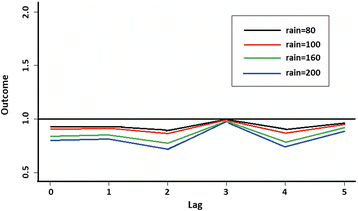

14 A way to determine if important cryptic aquatic habitats exist in a locality is by monitoring the impact of immature control on both immature and adult mosquito populations. When cryptic habitats are present, but not identified, only the containers that are visible will be treated resulting in incomplete application of control measures, which in turn virtually guarantees the failure of vector control programs.

The other limitation is the existence of cryptic aquatic habitats, which produce dengue virus vectors, such as storm drains, septic tanks, roof gutters, elevated water tanks, and depressions on roof tops, 9 – 15 some of which are locally abundant and highly productive. Access to properties can be compensated by adjusting the work schedule of vector control programs, and by creating legislation facilitating access of health inspectors to premises. 3 This prevents achieving area-wide management of the vector, and mosquitoes from houses that did not receive control measures are able to recolonize habitats in adjacent properties. The first of which is gaining access to the houses or properties that are producing the mosquitoes because the residents are absent or refuse entry to vector control personnel. 6 Aside from increased resistance to the most widely used larvicide (temephos 7, 8), there are two main limitations in controlling immature mosquitoes. Adulticiding techniques have limited effects on existing adult mosquitoes and does not allow for sustained control of vector populations. 2 Indoor residual spraying is being applied for the focal control of Aedes aegypti in and around dengue cases in Australia 5 but this technique is not commonly used elsewhere. Immature stages of mosquitoes are generally controlled by removing containers that can be used as larval habitats or through the application of larvicides, whereas adults are controlled by spatial spraying of pesticides. 4Ĭurrent approaches to controlling dengue virus vectors rely on the control of immature mosquitoes or adults. 3 Additional factors limiting dengue control are elevated levels of insecticide resistance and lack of evaluation of the efficacy of vector control measures. Population growth has increased urban complexity in mosquito habitat compartmentalization and limits the required access of vector control personnel to premises. Furthermore, many indispensable (e.g., water-storage containers) and disposable containers (e.g., trash, junk) result from urbanization in the absence of adequate public services. The control of dengue vectors is complicated by a lack of trained personnel and resources and by adopting reactive approaches to dengue control only during epidemics. 1 Because vector control is the only means to control dengue virus transmission currently available, 2 the sustained increase of dengue probably reflects lack of significant impact or at the best, a partial impact of vector control without which dengue figures would be even larger. Dengue is the most common arboviral disease in the world, and one that has continued to increase in incidence over the last five decades.


 0 kommentar(er)
0 kommentar(er)
